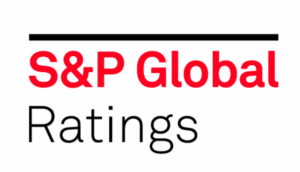How Much Is Home Insurance In Alberta?

Home insurance is an essential investment for homeowners in Alberta, as it protects their property and belongings in the event of unexpected damages or losses. However, the cost of home insurance can vary widely depending on a variety of factors.
Homeowners may wonder how much they should expect to pay for their policy and what factors can impact the cost.
In this article, we will explore the cost of home insurance in Alberta, including the average prices, factors that influence the cost, and ways that homeowners can reduce their insurance premiums.
By understanding the costs associated with home insurance in Alberta, homeowners can make informed decisions when choosing a policy that provides the right level of coverage for their needs and budget.
How Much Is Home Insurance In Alberta?
The cost of home insurance in Alberta can vary depending on a number of factors, such as the type of coverage you need, the value of your home, and where you live. However, according to recent data, the average annual cost of home insurance in Alberta is around $1,200.
It’s important to keep in mind that this is just an average, and your actual premium could be higher or lower depending on your individual circumstances. Factors that can affect your home insurance premium in Alberta include the age and condition of your home, the size and location of your property, the type of construction materials used in your home, and your claims history.
To get a more accurate estimate of how much home insurance will cost you in Alberta, it’s best to speak with an insurance provider directly. They can assess your specific needs and provide you with a quote based on your individual circumstances.
What Are Some Tips For Getting Home Insurance In Alberta?
Here are some tips for homeowners in Alberta when it comes to home insurance:
Shop Around: Homeowners should obtain quotes from multiple insurance providers to compare coverage options and premiums. This allows them to choose a policy that fits their needs and budget.
Understand Coverage Needs: It’s essential for homeowners to understand their coverage needs, including the level of coverage required for their home and personal belongings. They should ensure they have adequate coverage to protect against common risks, such as fire, theft, or natural disasters.
Consider Bundling Policies: Many insurance providers offer discounts to customers who bundle multiple insurance policies, such as home and auto insurance. Bundling policies can save homeowners money on premiums and simplify their insurance payments.
Increase Deductibles: Homeowners can lower their insurance premiums by increasing their deductibles, which is the amount the homeowner pays out of pocket before the insurance policy kicks in. However, homeowners should ensure they can afford to pay the higher deductible in the event of a claim.
Install Home Security Systems: Installing a home security system can lower the risk of theft or damage to the property, which can lead to lower insurance premiums. Many insurance providers offer discounts to homeowners who have security systems installed.
Maintain a Good Credit Score: Homeowners with a good credit score may be eligible for lower insurance premiums. Insurance providers consider credit scores when determining insurance rates, so maintaining a good credit score can help homeowners save money on insurance.
By following these tips, homeowners in Alberta can find ways to lower their insurance premiums while still maintaining the coverage they need to protect their homes and personal belongings.
Factors that Affect the Cost of Home Insurance in Alberta
Several factors influence the cost of home insurance in Alberta. Understanding these factors is essential for homeowners to make informed decisions when selecting a policy that fits their needs and budget. Here are some of the main factors that affect the cost of home insurance in Alberta:
Location: The location of a home is a crucial factor in determining the cost of home insurance. Some neighbourhoods may have higher crime rates, increasing the risk of theft or vandalism. Areas prone to natural disasters such as flooding or wildfires may also have higher insurance premiums.
Age and condition of the home: Older homes may have outdated electrical or plumbing systems that pose a higher risk of damages or fires. Upgrades and renovations to a home can increase its value and, therefore, the cost of insurance coverage.
Level of coverage required: The more comprehensive the insurance policy, the higher the premiums will be. Homeowners who opt for additional coverage such as extended liability or flood insurance may see a rise in their insurance costs.
Deductible amount: The deductible is the amount of money a homeowner must pay out of pocket before the insurance coverage kicks in. Choosing a higher deductible can lower the insurance premiums, but homeowners must be prepared to pay more out of pocket in the event of a claim.
Home security measures: Homeowners who take extra measures to secure their homes, such as installing security systems or fire alarms, may be eligible for discounts on their insurance premiums.
By considering these factors, homeowners can better understand the cost of home insurance in Alberta and make informed decisions when selecting the right policy for their needs.
How Each Of These Factors Affects The Cost Of Home Insurance
Let’s take a closer look at each of the factors that influence the cost of home insurance in Alberta, and how they can impact the price of a policy:
Location: The location of a home is a crucial factor in determining the cost of home insurance. A home in a neighbourhood with a high crime rate will likely have higher insurance premiums since there is a greater risk of theft or vandalism. Additionally, homes located in areas prone to natural disasters, such as floods or wildfires, may require additional coverage, which can increase the cost of insurance.
For example, a homeowner in a neighbourhood with a high crime rate may pay more for home insurance than someone living in a low-crime area, even if their homes are of similar value. Similarly, a homeowner in a flood-prone area may need to pay more for flood insurance coverage to protect their property.
Age and condition of the home: The age and condition of a home can significantly impact the cost of home insurance. Older homes may have outdated electrical or plumbing systems that pose a higher risk of damages or fires. Upgrades and renovations to a home can increase its value and, therefore, the cost of insurance coverage.
For example, a homeowner with an older home that hasn’t had any recent renovations or updates may be charged higher insurance premiums than someone with a newer, updated home. Similarly, a homeowner who has made significant renovations to their home may see an increase in their insurance premiums due to the increased value of their property.
Level of coverage required: The level of coverage required is another significant factor that can impact the cost of home insurance. A more comprehensive insurance policy will generally have higher premiums than a basic policy with limited coverage.
For example, a homeowner who opts for extended liability coverage or additional protection against natural disasters may pay more for their insurance than someone with a basic policy that only covers the basics.
Deductible amount: The deductible is the amount a homeowner must pay out of pocket before the insurance coverage kicks in. Choosing a higher deductible can lower insurance premiums, but homeowners must be prepared to pay more out of pocket in the event of a claim.
For example, a homeowner who opts for a higher deductible amount may see a reduction in their insurance premiums compared to someone with a lower deductible. However, they will need to be prepared to pay more out of pocket if they need to file a claim.
Home security measures: Homeowners who take extra measures to secure their homes, such as installing security systems or fire alarms, may be eligible for discounts on their insurance premiums.
For example, a homeowner who installs a security system that alerts authorities in the event of a break-in may be eligible for a discount on their insurance premiums. This is because the security system reduces the risk of theft or vandalism and, therefore, lowers the risk to the insurance provider.
Average Cost of Home Insurance in Alberta
The average cost of home insurance in Alberta can vary depending on a variety of factors, including the location of the home, the age and condition of the property, the level of coverage required, the deductible amount, and any home security measures taken. According to a report from the Insurance Bureau of Canada, the average annual cost of home insurance in Alberta was $1,131 in 2020.
However, it’s important to note that this is just an average, and individual insurance premiums can vary widely based on the factors mentioned above. For example, a homeowner in a high-risk area or with an older home may have higher insurance premiums than someone with a newer home in a low-risk area.
To get an accurate estimate of the cost of home insurance for a specific property, homeowners should contact their insurance provider and request a personalized quote based on their specific circumstances. This will allow them to compare coverage options and choose a policy that provides the right level of coverage for their needs and budget.
Break Down The Cost By Region
The cost of home insurance can vary not only by region but also from city to city or even from neighbourhood to neighbourhood within the same city. In Alberta, the average cost of home insurance can range from $931 to $1,331 annually, depending on the region.
For example, homeowners in the Calgary region can expect to pay an average of $1,185 per year for home insurance, while those in the Edmonton region can expect to pay slightly less at $1,141 per year. However, within each region, the cost of insurance can still vary based on factors such as location and home value.
In larger cities like Calgary and Edmonton, the cost of home insurance can vary significantly from neighbourhood to neighbourhood. Areas with a high incidence of property crimes or claims for damages will typically have higher insurance premiums than areas with lower claims. Additionally, neighbourhoods with a higher average home value may require more comprehensive coverage, which can increase the cost of insurance.
For example, in Calgary, homeowners in neighbourhoods like Altadore, Elbow Park, and Mount Royal may have higher insurance premiums due to the higher value of the homes in those areas. Similarly, in Edmonton, neighbourhoods like Strathcona and Belgravia may have higher insurance premiums due to their proximity to the North Saskatchewan River and the higher risk of flooding.
It’s essential for homeowners to speak with their insurance providers to understand how location and other factors can impact the cost of their insurance policy. By doing so, homeowners can make informed decisions about their coverage needs and ensure that they are not paying more than necessary for their home insurance.
Options Available To Homeowners To Reduce Their Insurance Premiums
Homeowners in Alberta have various options available to them to reduce their home insurance premiums. Here are some of the most common ways to lower insurance costs:
Bundling Policies: Many insurance providers offer discounts to customers who bundle multiple insurance policies, such as home and auto insurance. By combining policies, homeowners can save money on both policies and simplify their insurance payments.
Increasing Deductibles: Homeowners can lower their insurance premiums by increasing their deductibles, which is the amount the homeowner pays out of pocket before the insurance policy kicks in. However, homeowners should be aware that a higher deductible means they will pay more out of pocket in the event of a claim.
Installing Home Security Systems: Installing a home security system can lower the risk of theft or damage to the property, which can lead to lower insurance premiums. Many insurance providers offer discounts to homeowners who have security systems installed, and some providers may require homeowners to install a system to qualify for coverage in high-risk areas.
Improving Home Safety Measures: Simple measures such as installing smoke detectors, fire alarms, and sprinkler systems can lower insurance premiums by reducing the risk of damage or loss from fire or water damage.
Renovating: Renovating a home can also reduce insurance premiums by improving the condition and safety of the property. For example, upgrading plumbing or electrical systems or installing a new roof can help prevent damage from water or fire, which can lead to lower premiums.
It’s important for homeowners to speak with their insurance providers to understand how they can lower their insurance premiums while still maintaining the coverage they need. By exploring these options, homeowners can find ways to reduce their insurance costs and save money without sacrificing coverage.
Conclusion
In conclusion, the cost of home insurance in Alberta can vary depending on several factors, such as the type of coverage you need, the value of your home, and where you live. While the average annual cost of home insurance in Alberta is around $1,200, it’s important to keep in mind that this is just an average, and your actual premium could be higher or lower depending on your individual circumstances.
Home insurance is a critical investment that protects you from unexpected expenses in case of property damage, theft, or liability. It’s essential to have adequate coverage that suits your specific needs and provides you with peace of mind. That’s why it’s always a good idea to shop around and compare quotes from different insurance providers to ensure that you get the best coverage at the best price.
Factors that can affect your home insurance premium in Alberta include the age and condition of your home, the size and location of your property, the type of construction materials used in your home, and your claims history. Insurance providers consider these factors to assess the level of risk associated with insuring your property.
To get a more accurate estimate of how much home insurance will cost you in Alberta, it’s best to speak with an insurance provider directly. They can assess your specific needs and provide you with a quote based on your individual circumstances.


